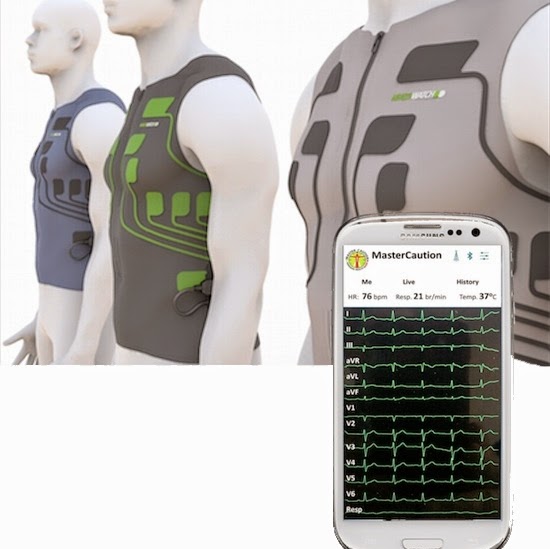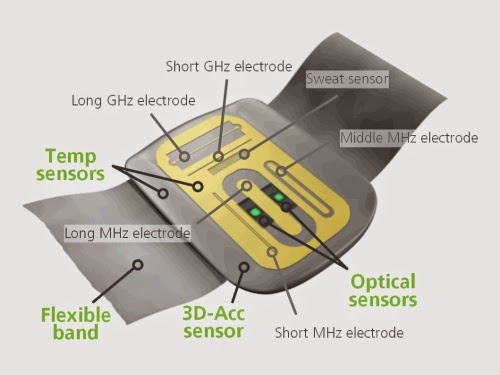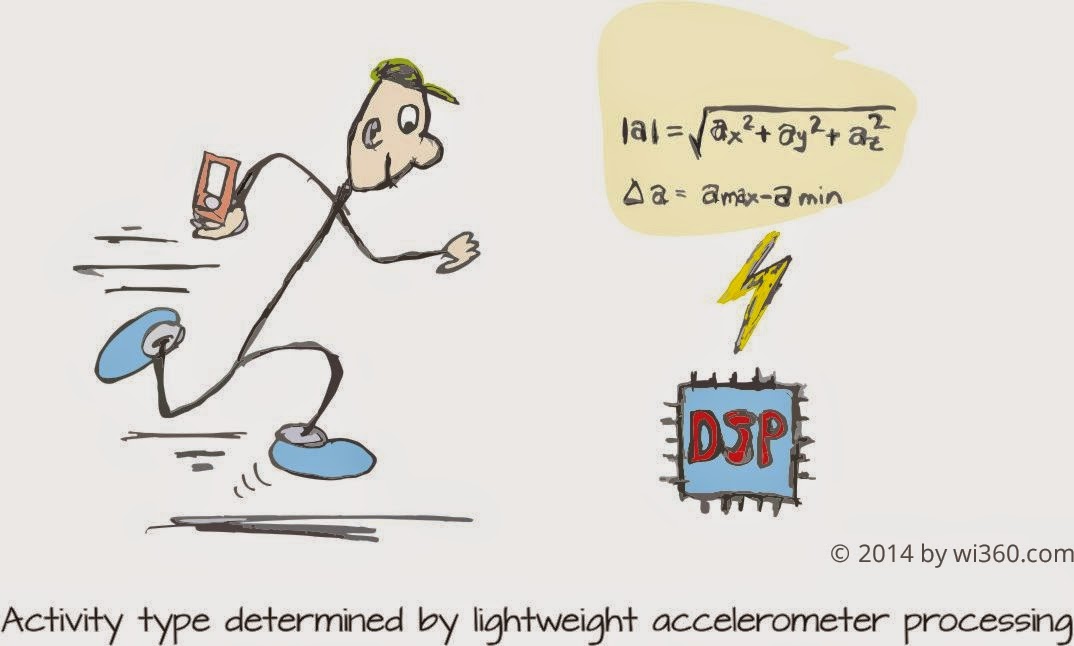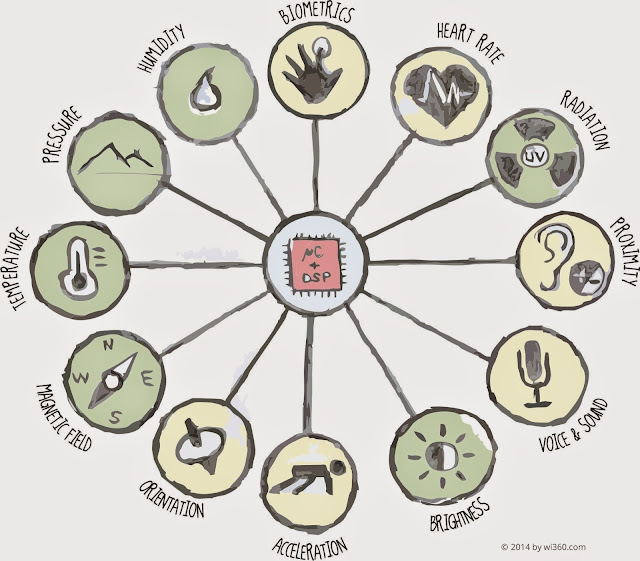Last week I attended the Medica right on my doorstep here in Düsseldorf. My goal was to investigate the state of mobile healthcare - mHealth - with a focus on personal medical electronics. We’ve seen lots of fitness devices becoming mainstream over the past years, but what about personal devices for those who have a chronic ailment? For the uninitiated: Medica is the world’s largest event in the medical sector and attracts over 130 000 visitors each year to see products and services from some 5000 exhibitors.
Having steered well clear of pavilions covering surgical devices (not for the faint of heart), one thing that immediately caught my eye was the large number of country booths in each hall inhabited by many smaller companies with innovative products. After visiting around 10 of these, I was surprised to often find the conversation steering towards regulation, compliance and the lobbying power of large incumbents in the medical and pharmaceutical field. It quickly became clear that mHealth has an armoury of jaw dropping technology at its disposal to propel the industry forward, yet security, privacy concerns, slow regulation & legislation and the interests of industry heavyweights curb and constrain enthusiasm and progress in adopting new technologies. Mobile health (mHealth) technology circumvents the technical challenges of existing health systems and provides a more flexible way of enhancing patient self-care. mHealth ultimately equips the patient with completely new 24/7 self-monitoring capabilities that change the dynamics of the doctor-patient relationship.
A second observation from my visit was the number of “cloud based” solutions on offer. In particular for establishing new electronic medical record systems to receive and process information from mobile devices, moving them to “the cloud” so that physicians and other experts have “anytime” and “anywhere” access to a patient’s health status.
The smartphone is a welcome hub for many mHealth solutions. It records incoming data from specialized sensors monitoring a patient’s condition, and wirelessly moves this data to “the cloud”. Often the device’s display provides insightful visual feedback. If necessary, acoustic alarms or haptic prompts notify the patient to take a corresponding course of action.
On the sensor front there are a plethora of exciting solutions around, many if the form of “wearables” and some as “implants”. Two examples from my Medica visit, both from companies who license their technology, give an idea of what’s round the corner. The Israeli company Healthwatch Technologies showcased T-shirt-like garments with interwoven textile electrodes that enable hospital-grade ECG (electrocardiogram) monitoring for patients with heart arrhythmia or palpitations. The garments are comfortable and machine washable.
The Swiss company Biovotion, award winner in Nokia’s recent Sensing X Challenge, demonstrated a device worn on the upper arm loaded with specialized sensors that monitor physiological parameters. The current version measures five parameters and the next-gen device expands this to thirteen.
Future versions will also allow measurement of blood glucose levels for diabetes patients using patented dielectric and optical spectroscopy techniques. Non-invasively of course, meaning no piercing of the skin and no blood. Present day self-monitoring of glucose is mostly done using test strips and readers. Pharmaceutical incumbents in this multi-billion dollar “strip” market will certainly raise their eyebrows once such technology reaches the street.
The two examples above demonstrate what novel personal medical electronics can achieve based on available technology.
In general, personal monitoring of the following vital metrics is certain to provide telemedicine with a fresh impetus going forward:
Privacy and security concerns are among the greatest barriers hampering mHealth adoption. They slow down innovation in this field. Understandably. Who wants their health monitored by a smartphone app if the data could be purchased by an insurance company or other third party covertly. Their interest in optimizing profit or increasing revenue might well rank higher than the patient’s well-being. So long as no clear legislation is in place on both national and international fronts that ascribes such abuse as a criminal offense, this promising area of the medical industry will not be able to fully take advantage of the opportunities offered by consumer electronics and match the fast cycle of innovation in the latter field. mHealth is at an important intersection right now. The technology has the potential to radically and effectively change the treatment of many lifestyle diseases which plague industrial societies.
 |
| Photo courtesy of Messe Düsseldorf GmbH |
Having steered well clear of pavilions covering surgical devices (not for the faint of heart), one thing that immediately caught my eye was the large number of country booths in each hall inhabited by many smaller companies with innovative products. After visiting around 10 of these, I was surprised to often find the conversation steering towards regulation, compliance and the lobbying power of large incumbents in the medical and pharmaceutical field. It quickly became clear that mHealth has an armoury of jaw dropping technology at its disposal to propel the industry forward, yet security, privacy concerns, slow regulation & legislation and the interests of industry heavyweights curb and constrain enthusiasm and progress in adopting new technologies. Mobile health (mHealth) technology circumvents the technical challenges of existing health systems and provides a more flexible way of enhancing patient self-care. mHealth ultimately equips the patient with completely new 24/7 self-monitoring capabilities that change the dynamics of the doctor-patient relationship.
A second observation from my visit was the number of “cloud based” solutions on offer. In particular for establishing new electronic medical record systems to receive and process information from mobile devices, moving them to “the cloud” so that physicians and other experts have “anytime” and “anywhere” access to a patient’s health status.
On the sensor front there are a plethora of exciting solutions around, many if the form of “wearables” and some as “implants”. Two examples from my Medica visit, both from companies who license their technology, give an idea of what’s round the corner. The Israeli company Healthwatch Technologies showcased T-shirt-like garments with interwoven textile electrodes that enable hospital-grade ECG (electrocardiogram) monitoring for patients with heart arrhythmia or palpitations. The garments are comfortable and machine washable.
 |
| Photo courtesy of Healthwatch Technologies |
The Swiss company Biovotion, award winner in Nokia’s recent Sensing X Challenge, demonstrated a device worn on the upper arm loaded with specialized sensors that monitor physiological parameters. The current version measures five parameters and the next-gen device expands this to thirteen.
 |
| Photo courtesy of biovotion |
Future versions will also allow measurement of blood glucose levels for diabetes patients using patented dielectric and optical spectroscopy techniques. Non-invasively of course, meaning no piercing of the skin and no blood. Present day self-monitoring of glucose is mostly done using test strips and readers. Pharmaceutical incumbents in this multi-billion dollar “strip” market will certainly raise their eyebrows once such technology reaches the street.
The two examples above demonstrate what novel personal medical electronics can achieve based on available technology.
In general, personal monitoring of the following vital metrics is certain to provide telemedicine with a fresh impetus going forward:
- heart rate
- body and/or skin temperature
- respiratory rate
- ECG (heart arrhythmia)
- blood pressure (hypertension)
- blood glucose levels (diabetes)
- lung volume/spirometry (asthma, COPD)
- oxygen level in blood (asthma, COPD, sleep apnea)
- sleep patterns (sleep apnea)
- sweat (anxiety and stress)
Privacy and security concerns are among the greatest barriers hampering mHealth adoption. They slow down innovation in this field. Understandably. Who wants their health monitored by a smartphone app if the data could be purchased by an insurance company or other third party covertly. Their interest in optimizing profit or increasing revenue might well rank higher than the patient’s well-being. So long as no clear legislation is in place on both national and international fronts that ascribes such abuse as a criminal offense, this promising area of the medical industry will not be able to fully take advantage of the opportunities offered by consumer electronics and match the fast cycle of innovation in the latter field. mHealth is at an important intersection right now. The technology has the potential to radically and effectively change the treatment of many lifestyle diseases which plague industrial societies.



